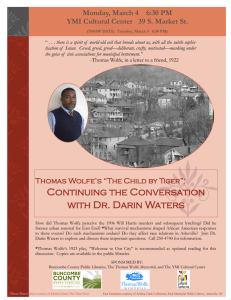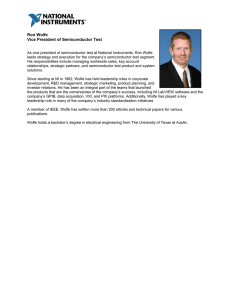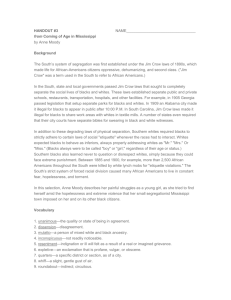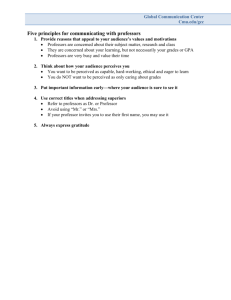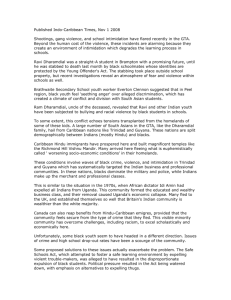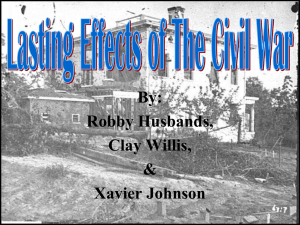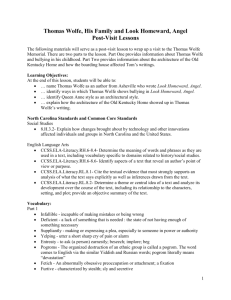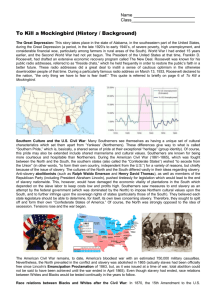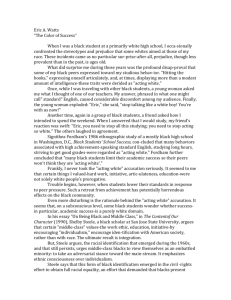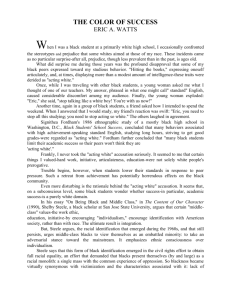The Child by Tiger: Thomas Wolfe Analysis & Themes
advertisement
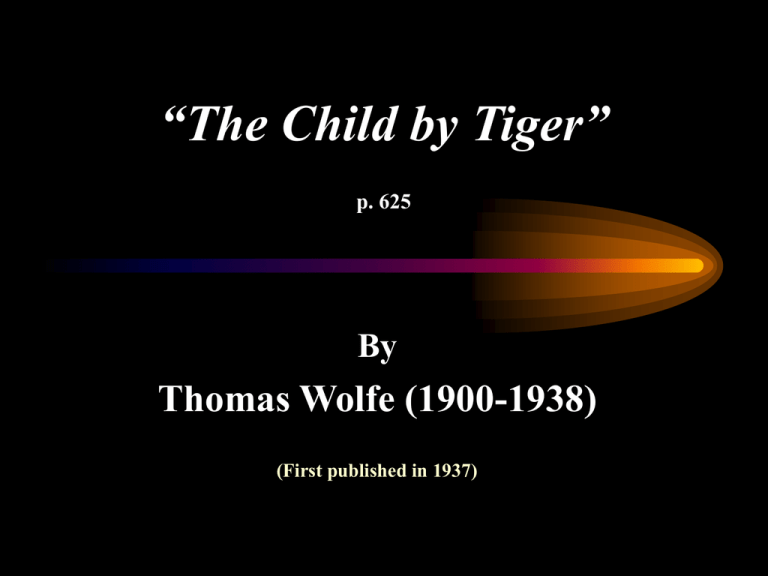
“The Child by Tiger” p. 625 By Thomas Wolfe (1900-1938) (First published in 1937) Thomas Wolfe http://library.uncwil.edu/wolfe/wolfe.html • Major modern American novelist • Also had many short stories published in magazines • Born and raised in Asheville, North Carolina Thomas Wolfe • Wrote four autobiographical novels – Look Homeward, Angel, published in 1929, was first – Of Time and the River, the second, was published in 1935 Types of Conflict – Person vs. person – Person vs. self – Person vs. nature – – – – Blacks vs. whites Blacks vs. blacks Whites vs. blacks Whites vs. whites Movement of Action • Exposition – Dick Prosser is introduced. • Complication – The boys see the rifle. • Climax – The manhunt takes place. • Denouement – Spangler reflects from a distance. Both natural and man-made • Man-made Setting (hostile) – Town’s social and economic structure based on white dominance over blacks. • Jobs • Homes – Parallels Wolfe’s hometown of Asheville, NC • Natural Setting (hostile) – Snow storm • Protagonist=Dick Prosser – Round character – Man of superior abilities – Highly religious – Often in situations that are an affront to his human dignity – Constantly suppressing emotions – Experiences indiscriminate outbreak • Antagonist=white society • Title – Refers to Blake’s poem and the contrasting of innocence and savagery in the human soul • Point of View – First person singular told from Spangler’s viewpoint • Snow Storm: – Foreshadowing of trouble – Violence of storm parallels violence of human actions – Covering of white snow symbolizes white dominance • Looting of Cash Eager’s place – Mob mentality – Animal lust • Dick’s physical description – red eyes – paw (hand) – removal of shoes at end – Both violence and evil exist in the human soul alongside gentleness and goodness. – Like all other aspects of nature, human nature has two sides—one beautiful and orderly and one repulsive and chaotic. • Like “The Most Dangerous Game,” this story has suspense, violence, and surprise. • Artistic unity, however, makes it more credible, complex, and significant. • The conflicts comment on the character, geographical area, and spirit of the times.
